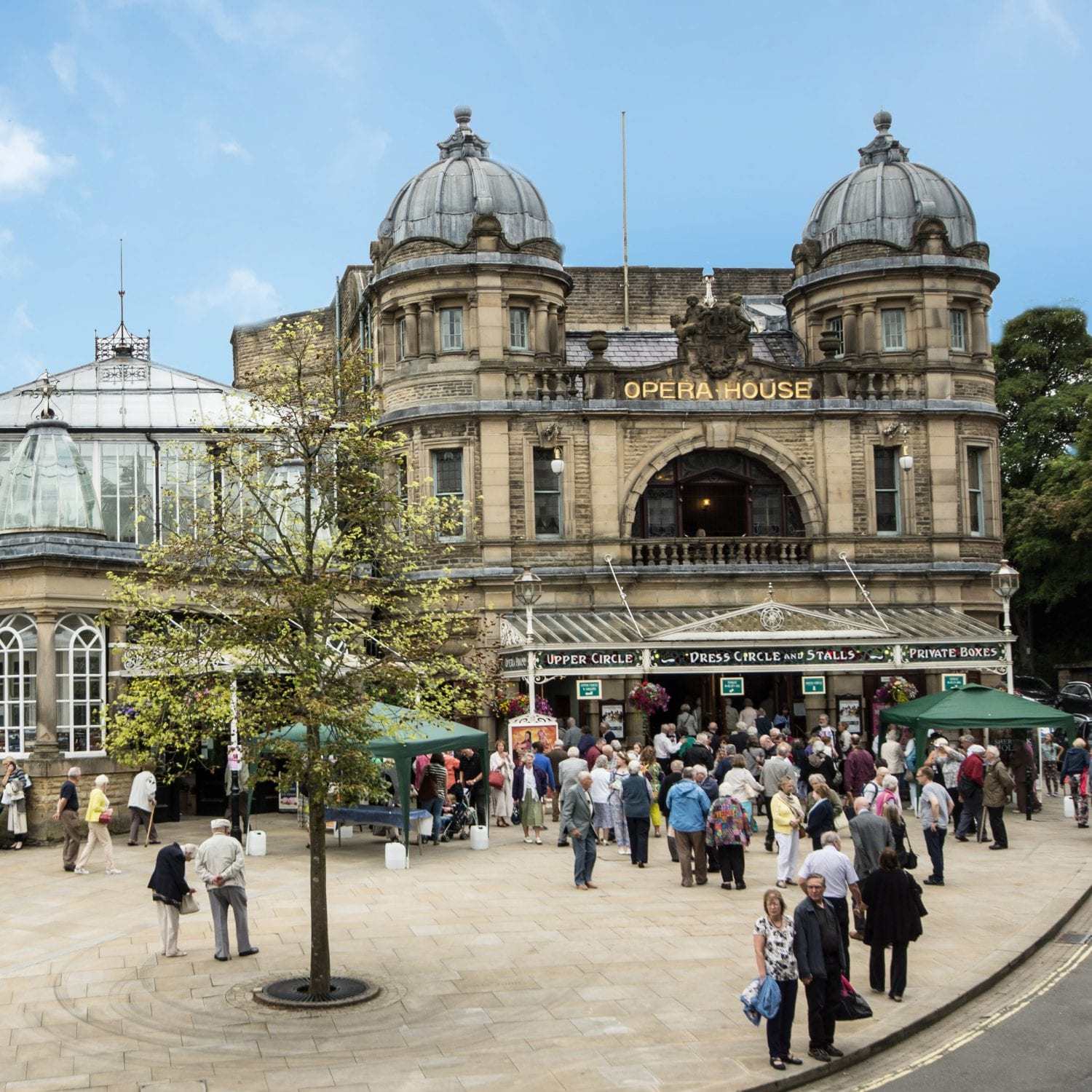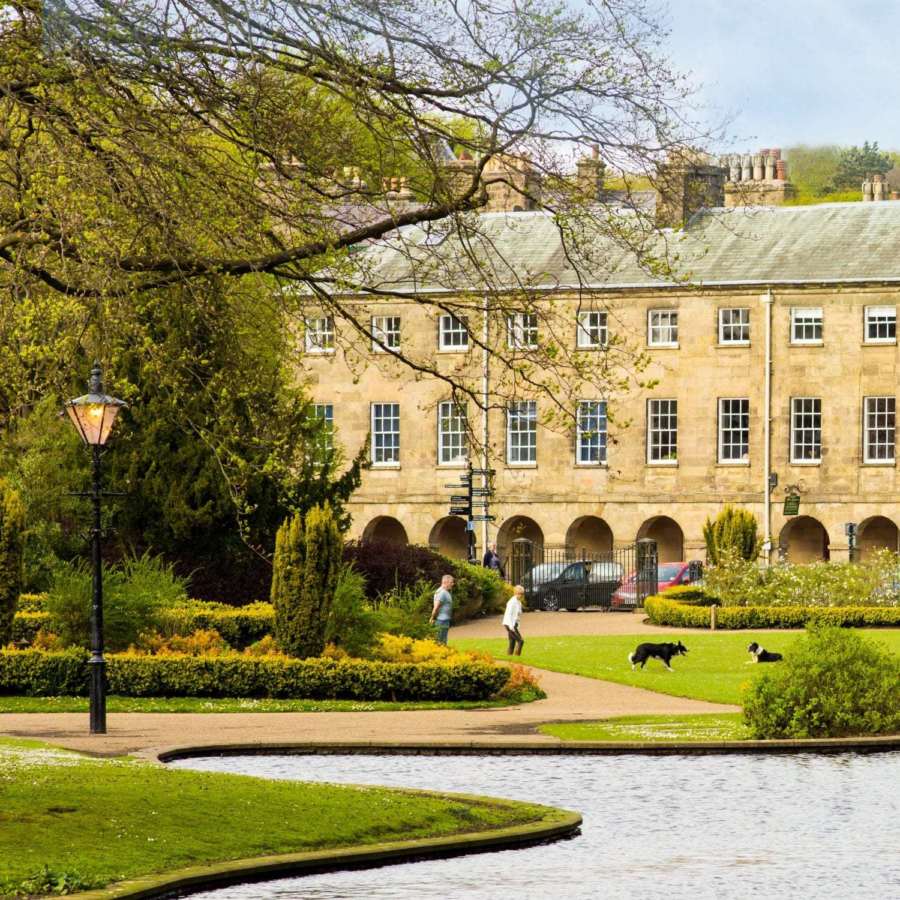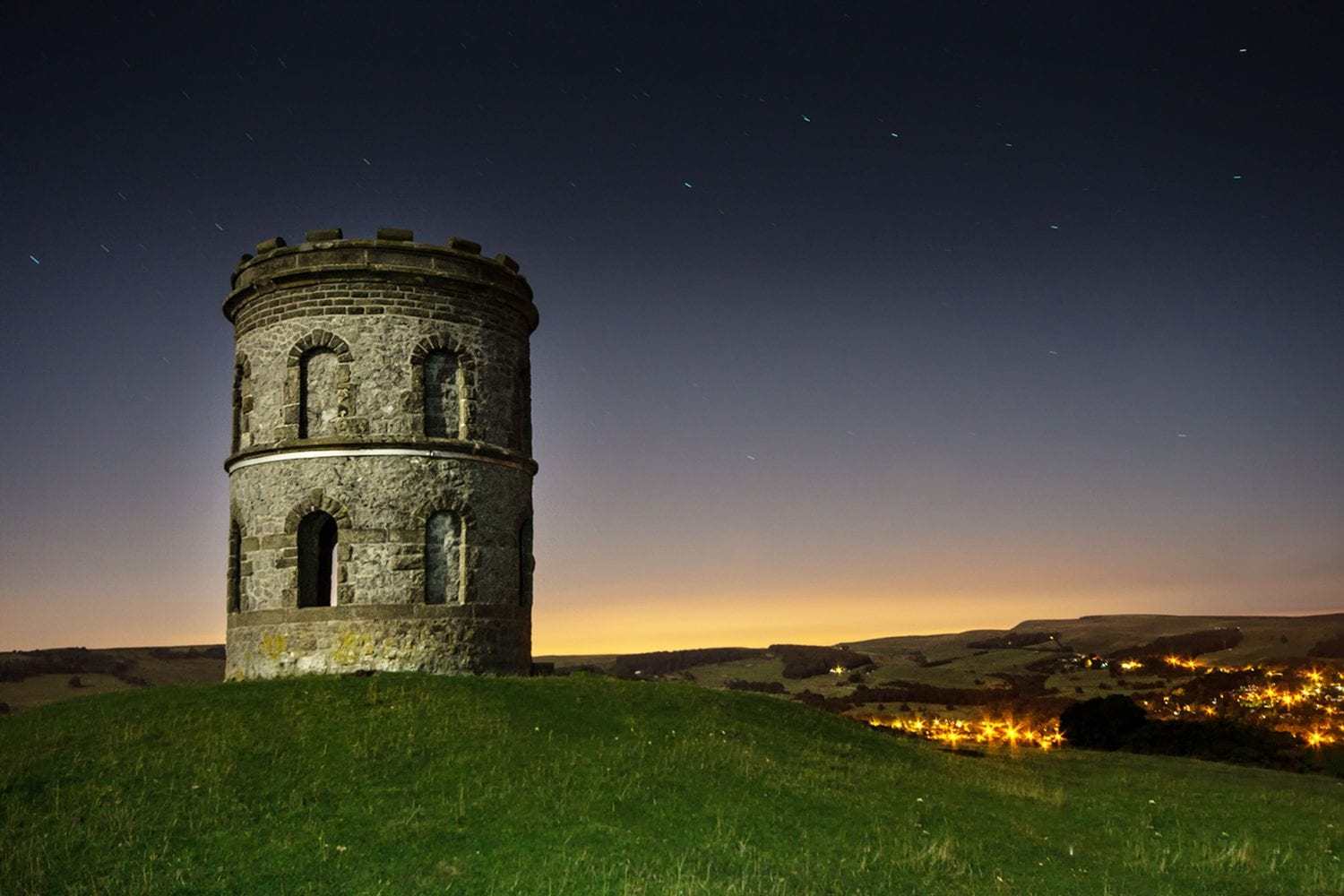
WanderLost...
Unit 6, Bankside Works, Lumley S...
As the Gateway to the Peak District, the historic spa town of Buxton should feature in the itinerary of every visitor to this area. It has something for everyone, with stunning Georgian and Victorian architecture, beautiful parks, quirky shops, top-class theatre, and fantastic dining.
For the kids there are caves to wonder at, woodland trails to explore, and a Go Ape experience with thrilling aerial rope walks.
The Romans settled in Buxton from around 78AD, naming it Aquae Arnemetiae, meaning the Spa of the Goddess of the Grove, and it has been renowned for the healing properties of its spa waters ever since. The town grew in size and influence in the late 18th Century, when it was developed by the 5th Duke of Devonshire as a resort spa in the style of Bath. The graceful Crescent was built in 1780, and echoes the famous Royal Crescent in Bath.
Buxton Mineral Water is still bottled just outside the town and is sold internationally. Its source, St Ann’s Well, is a geothermal spring located close to the Crescent. The water emerges from the ground at a warm 28 degrees Celsius, and members of the public are welcome to drink directly from the well or fill their own bottles there.

Buxton Opera House
Buxton is well known for its beautiful Edwardian Opera House, designed by Frank Matcham in 1903. It has recently been restored after a major refurbishment programme, and its opulent interior is well worth seeing, with magnificent ceiling paintings and gold leaf decoration. The Opera House hosts a great many drama, comedy and music events throughout the year. Visit www.buxtonoperahouse.org.uk for further information.
A further remarkable Buxton landmark is the Devonshire Dome, built in 1789 and designed by local architect Robert Rippon Duke. It is one of the world’s largest unsupported domes with a diameter of 44.2 metres, larger than the Pantheon and St Peter’s Basilica in Rome, or St Paul’s Cathedral in London. The Devonshire Dome is now a campus of the University of Derby.
Also located within the Devonshire Dome, and perfect for rejuvenation after a day of culture and shopping, is the award-winning Devonshire Spa. A recent winner at the World Luxury Spa Awards and Day Spa of the Year in 2016, it’s the perfect place to relax.
The Spa offers a wide range of beauty treatments, and facilities include a hydrotherapy pool, reflexology foot baths, a sauna, steam room, aroma room and monsoon shower. Visit www.devonshiredome.co.uk/devonshire-spa for more information.
Buxton Museum and Art Gallery is a great place to discover more about the archaeology, geology, history and art of Buxton and the Peak District.
The ‘Wonders of the Peak’ exhibition takes visitors through Peak District lives throughout the millennia, and gives lots of information about the different landscapes of the area.
There are also frequent exhibitions from local artists. The Museum and Art Gallery is free to enter and usually open from Tuesday to Saturday, 10am-5pm, and on Sundays and Bank Holidays from midday to 4pm, but please check opening times before you visit. For more information, see www.derbyshire.gov.uk/leisure/buxton-museum.

Pavilion Gardens
On a sunny day, head straight for the Pavilion Gardens, an impressive Grade II listed building built in 1871, set in 23 acres of landscaped parkland on the banks of the River Wye.
The Pavilion Gardens houses Buxton’s Visitor Information Centre, as well as a gift shop and café. It also hosts regular craft and art fairs. The parkland includes a large children’s play area, a miniature train, ornamental ponds and a well-stocked tropical greenhouse.
If boutique shopping is more your thing, be sure to visit the Cavendish Arcade, located within the original thermal baths. It has a range of independent shops and lovely cafes, all set in this beautiful historic building dating from 1852.
There is no shortage of brilliant places to eat and drink in Buxton. Make sure you visit the Old Hall Hotel, one of the oldest buildings in Buxton and the oldest hotel in England.
The present building dates from 1670, but an earlier building on the same spot was a temporary gaol to Mary, Queen of Scots in 1584, when she was held here by the 6th Earl of Shrewsbury and his wife, Bess of Hardwick.
Today the Old Hall Hotel offers traditional a la carte dining overlooking the beautiful Pavilion Gardens, either in the restaurant or the more informal wine bar. Afternoon tea is served daily from 2.00-4.30pm. For menus and opening information, visit www.oldhallhotelbuxton.co.uk.
For a more relaxed vibe, check out another one of our favourites, the Buxton Tap House, located in the historic Old Court House on George Street. Its extensive bar menu is complemented by a wide range of beers brewed on the premises by the Buxton Brewery. There are also regular open mic spots for local comedians and musicians. For more information, see www.buxtonbrewery.co.uk/tap-house.
For a wide selection of cocktails and craft beers, try 53 Degrees North on Hall Bank. This cosy bar also serves great food, including Sunday roasts every week, and hosts regular live music events. See www.facebook.com/53degreesnorthbuxton for full details. Or for a wide range of modern, interesting pub fare, try The Old Sun Inn on the High Street. This great pub serves home-cooked, locally-sourced produce, including British tapas. Visit www.theoldsuninnbuxton.co.uk for more information.

Solomon’s Temple, Buxton
Buxton is situated in a fabulous location and any visitor to the town should also plan to explore the beautiful countryside that surrounds it. Buxton is overlooked by two hills, Grin Low Hill and Corbar Hill. On the top of Grin Low Hill, at 439m high, is a well-known local landmark, a tower known as Solomon’s Temple.
A folly built in 1834 to provide work for the town’s unemployed, it was restored in 1996 and is now open to the public. Visitors can climb the spiral staircase to the top of the crooked tower for magnificent views over the town. On the top of Corbar Hill, look out for Corbar Cross, a tall cross given to the town by the Duke of Devonshire to celebrate Holy Year in 1950.
Located a short drive outside the town is Poole’s Cavern, a beautiful show cave formed naturally out of the limestone rock over 2 million years ago. The Cavern is designated a Site of Special Scientific Interest, and recent archaeological explorations have suggested that it was occupied during the Bronze Age.
The Cavern has been officially open to the public since 1853, when the entrance was made accessible and a system of gas lamps was installed.
Thankfully, modern visitors can now marvel at the Cavern’s wonders with the help of LED lighting. The area open to the public extends to around 310 metres in length and includes spectacular rock formations in the many chambers.
Poole’s Cavern is set within the extensive Buxton Country Park. There are numerous country walking trails through the 100 acres of mature deciduous woodland, which link up to Grin Low Hill and Solomon’s Temple. For more information about Poole’s Cavern and Country Park, including pries and opening times, visit www.poolescavern.co.uk.
Even more adventurous visitors will love the Go Ape! Tree Top Adventure course, located next to the Poole’s Cavern complex. Buxton’s course is one of the highest in the UK at 1,200ft, and has recently been extended to create its own tree-to-tree zip wire section and a giant Tarzan swing drop. There is a separate high ropes course for younger adventurers too, designed for the whole family to enjoy together. This is suitable for those over 1m tall, with no age restriction. Participants are attached at all times. For more information and up-to-date prices and opening times, visit www.goape.co.uk/days-out/midlands/buxton.

Buxton Crescent Spa Hotel